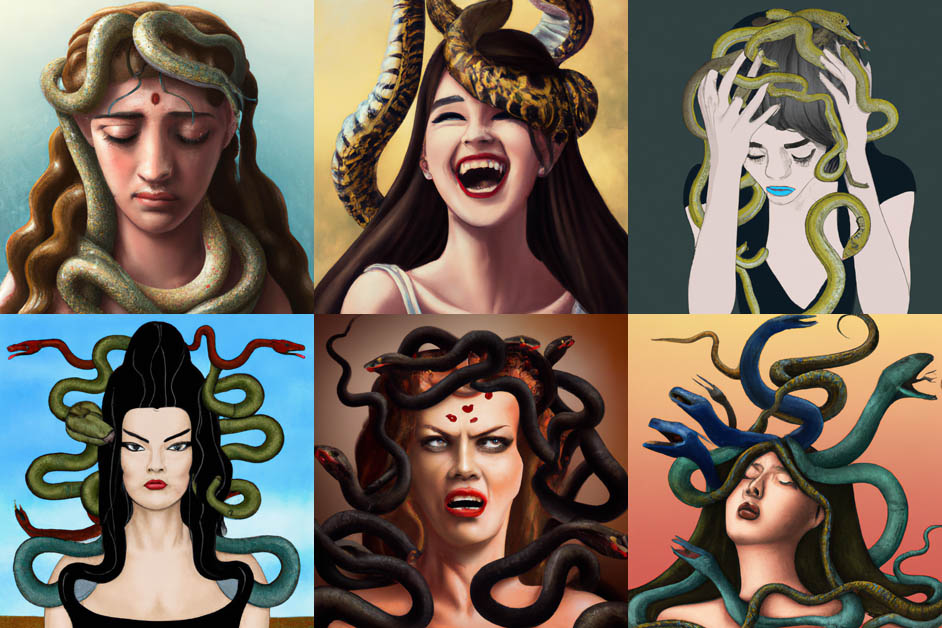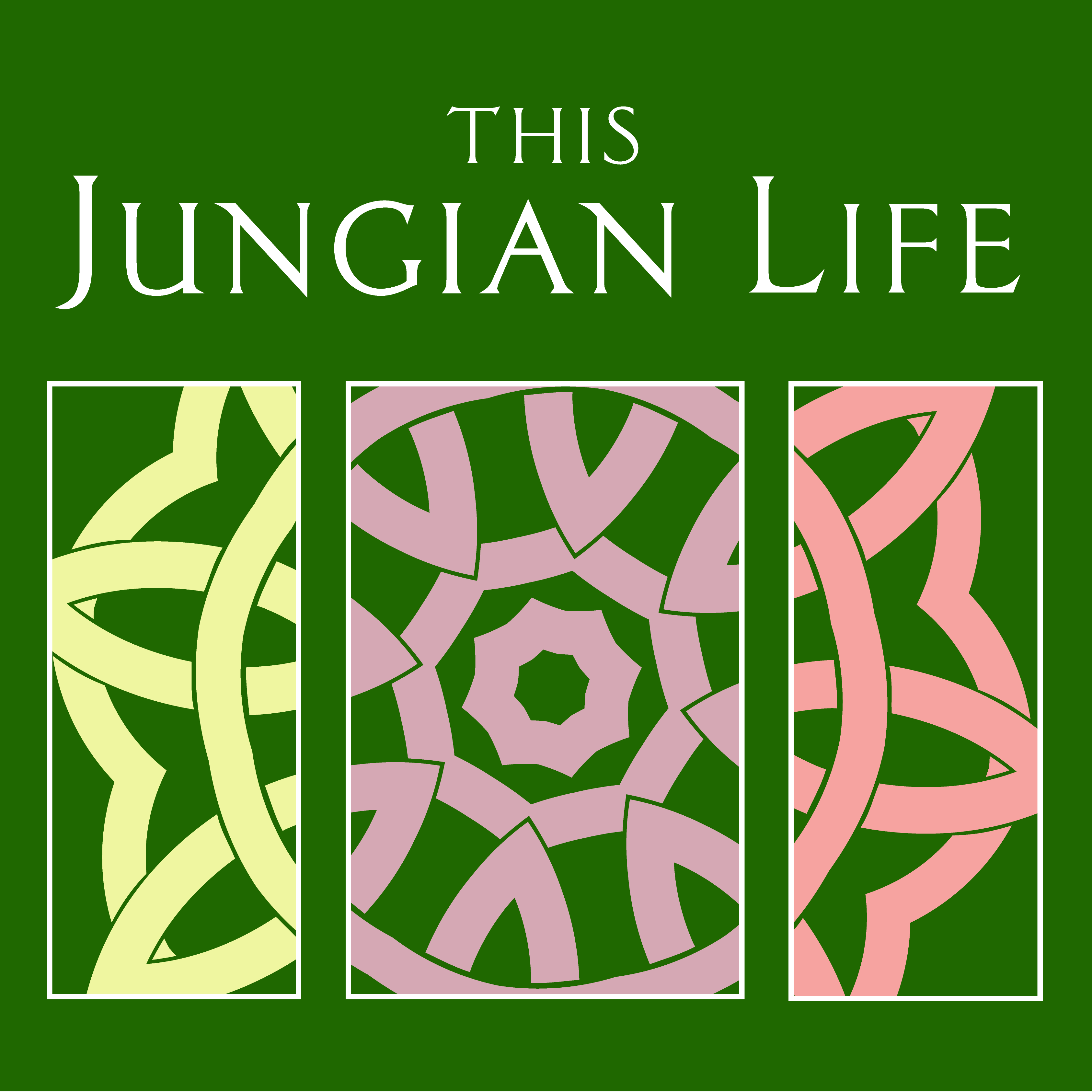
The myth of Medusa, one of the three Gorgon sisters in Greek mythology, has captivated and perplexed the imagination of artists, writers, and philosophers for centuries. Originally depicted as a monstrous creature with snakes for hair and the ability to turn onlookers to stone, Medusa has undergone a remarkable transformation.
The earliest known written account of the Medusa myth is found in Hesiod’s Theogony (c. 700 BCE), where she is portrayed as one of the three Gorgon sisters, daughters of Phorcys and Ceto. Medusa is unique among her siblings in that she is mortal yet possesses a petrifying gaze that could turn anyone who beheld her into stone. In subsequent retellings, such as Ovid’s Metamorphoses (c. 8 CE), Medusa’s monstrous appearance is ascribed to a curse inflicted by the goddess Athena, who punished her for desecrating the temple by lying with Poseidon.
In the visual arts, the symbolism of Medusa was represented as a terrifying figure, often with glaring eyes, protruding tongue, and a mass of writhing serpents for hair. This monstrous representation of Medusa persisted for centuries and was often linked to the idea of the apotropaic—a protective talisman meant to ward off evil. But, then, with the diminishing interest in anthropomorphic gods, her influence faded, and her face was added to the bottom of Roman wine goblets to surprise guests.
Medusa’s image has been subject to various interpretations throughout history, with Sigmund Freud offering his perspectives on the myth. In his essay, “Medusa’s Head,” he posited that the Gorgon’s visage symbolizes castration anxiety, with the petrifying gaze representing the fear of emasculation.
Interpreted through a Jungian lens, the myth can be viewed as a development of the anima, the feminine aspect of the male psyche. Medusa’s petrifying gaze renders men immobile and lifeless, symbolizing the paralyzing effect that an unintegrated anima can have on a man’s psychological development through depression, anxiety, and distorted thinking. To overcome this paralysis, he must confront the anima and integrate her into the conscious psyche. In the myth of Perseus, the head is severed from the body so that the mystery of the monster may be put to use. By incorporating the Gorgon’s head into his arsenal, Perseus metaphorically assimilates the power of Medusa, integrating the darker elements of his anima into a protective, transformative force.
When viewed as the artifact of a psychic event in the collective unconscious, the myth may reflect the evolution of the father-bound virginal feminine principle. Athene sprang from Zeuse’s head, fully formed, and remained unfailingly loyal to him and the heroes he fathered. When confronted by the primal sexuality between the Chthonic Gorgon and the untempered Poseiden, Athene was outraged. She demonized Medusa, related to the ancient fertility goddesses, making her monstrous. Anyone who looked upon her, friend or foe, god or mortal, would be turned to stone, thus banishing her from consciousness. Athene patronized war as the strategic art of death, but Medusa’s killing power could not be controlled. With the help of Perseus, guided by Athene, Medusa was beheaded and placed on Athene’s shield and armor. Within the collective unconscious, raw, instinctive force imaged as Medusa was transformed into a symbol and reintegrated as an aspect of Athene—the father-bound daughter encounters her instinctive sexual power, splits, and banishes it, then reclaims it in symbolic form. From this perspective, the myth describes a symbolic process of disintegration and reintegration.
The myth of Medusa also offers insights into the human relationship with nature and the cosmos. As a Gorgon, Medusa represents a primordial force of chaos and destruction, embodying the untamed and unpredictable aspects of the natural world. Her petrifying gaze can be interpreted as a reminder of the inherent danger and potential for devastation that exists within the natural order. This idea is further reinforced by her connection to the sea god Poseidon, who represents the ocean’s unpredictable and often destructive power. The myth of Medusa thus serves as a cautionary tale, urging humanity to respect and fear the forces of nature, which possess the power to create and destroy.
The latter half of the 20th century and the subsequent years saw a reevaluation of Medusa’s image, with many contemporary thinkers and artists embracing her as a symbol of female empowerment and resilience. This shift in perspective may be seen as an expression of the collective psyche’s desire to confront and reintegrate the repressed aspects of the feminine.
In this context, the French feminist philosopher Hélène Cixous argued that the myth of Medusa represents the subjugation of women and their sexuality. In her influential essay, “The Laugh of the Medusa,” Cixous contends that Medusa’s transformation into a monster was a patriarchal attempt to suppress female power and knowledge. She urges women to reclaim the Gorgon’s image as a symbol of female empowerment.
The evolution of the myth and image of Medusa offers a compelling study in the power of reinterpretation and the resilience of archetypal symbols. From her origins as a monstrous figure in Greek mythology to her contemporary status as a feminist icon, Medusa has consistently challenged and defied the expectations imposed upon her. Her ongoing transformation serves as a testament to the malleability of myth and the enduring appeal of characters that embody transformation, resistance, and power.
~ Joseph R. Lee
HERE’S THE DREAM WE ANALYZE:
“I was alone in an unfamiliar building and going to give birth to twins, but they were crocodiles. I was afraid and trying to escape this building, but a midwife appeared and kept finding me when I tried to escape. She would tell me I had to give birth and wouldn’t let me escape. She was firm but wasn’t mean. Then the building morphed into a hospital, and I gave birth to the crocodiles in a hospital room. I was terrified I was going to have to breastfeed them. (This stands out as the scariest part of the dream.) I was scared holding two baby crocodiles with their mouths open, their teeth exposed, and I was getting ready to breastfeed them.”
MEET JOSEPH in NEW ORLEANS ON MAY 5th 2023.
For more information, click HERE.
BECOME A DREAM INTERPRETER
We’ve created DREAM SCHOOL to teach others how to work with their dreams. A vibrant community has constellated around this mission, and we think you’ll love it. Check it out.
PLEASE GIVE US A HAND
Hey folks — We need your help. So please BECOME OUR PATRON and keep This Jungian Life podcast up and running.
SHARE YOUR DREAM WITH US
SUBMIT YOUR DREAM HERE FOR A POSSIBLE PODCAST INTERPRETATION.
FOLLOW US ON SOCIAL MEDIA
FACEBOOK, INSTAGRAM, LINKEDIN, TWITTER, YOUTUBE
INTERESTED IN BECOMING A JUNGIAN ANALYST?
Enroll in the PHILADELPHIA JUNGIAN SEMINAR and start your journey to become an analyst.

0 Comments